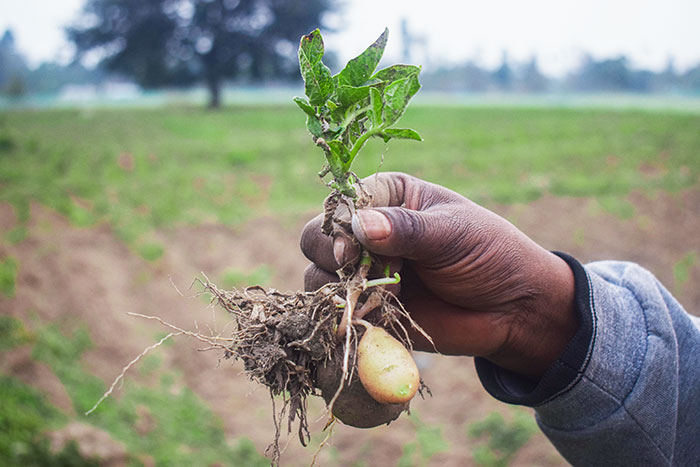Rajesh Rai | Samtse
The irrigation scheme with an artificial lake at Norbugang gewog, Samtse, has failed to supply water and did not benefit farmers.
With its failure, the dream of reviving more than 100 acres of fallow land in the gewog has also been crippled. Located at a slightly higher elevation of Bhimtar village, the irrigation scheme is called Tharaykhola Irrigation Scheme (TIS).
The project, which started in July 2018 and completed in early 2020, was constructed at a staggering Nu 36.8 million (M).
It is a World Bank-funded food security and agriculture productive project (FSAPP) under the agriculture ministry. The scheme would have benefitted more than 300 households.
But today, TIS’s failure has become a subject of gossip in the small town of Chengmari. The lake water has also dried up.
Farmers are disappointed.

Shortage of irrigation water has led to poor crop yield
Hoping the scheme could be of benefit, Ashok Darjee, 53, and his friends had taken a loan of Nu 300,000 and leased six acres of fallow land for winter commercial farming.
Potatoes, green chili, carrot, radish, beans and peas were grown.
The vegetables in the farm have withered without enough water.
Ashok Darjee said he was disheartened. “We’ll never do such farming. Why invest time and money?”
He said his team had plans to lease 25 more acres of fallow land and do paddy farming. The plan is suspended.
The problem with the irrigation scheme, villagers say, was between the water source and the lake.
Villagers say the pipe joints break and water leaks and doesn’t reach the lake from where the water is distributed to farmers. The ground where the pipes have been laid was not dug properly.
A users’ group committee was also formed for the scheme.
A chairman for the committee, Gautam Subba, said people had high expectations to do winter farming. “Once the water was released, the pipes burst.”
He said they expected repair and inspection to be carried out. “But the work didn’t start and the lockdown happened.”
Gautam Subba said the committee has also written to their representative in the parliament.
The Norbugang gewog office has also been notified.
“Gup has said even an audit was also conducted. But we don’t know anything,” Gautam Subba said.
However, the villagers and the gewog administration are also not sure when the audit was carried out.
Norbugang gup said they had no idea if auditing was done until the audit memo arrived at the office.
Meanwhile, the lake irrigation scheme doesn’t fall under the dzongkhag.
The project was awarded and carried out centrally from the government. Villagers claim they have no idea how the management was done.
A villager said they were once called for an inspection, provided lunch and made to sign some papers. “We thought it was for the rectification works. But it was not. It was handing-taking.”
He raised the issue when the GNHC secretary visited the site. “People were cheated. It will take only a small maintenance work and we’ll get the water.”
He said the huge fund would go to waste if the scheme was not revived. “It’s better such funding is put elsewhere for better results and benefits.”
Norbugang gup Kuenga said the gewog had no issues with the contractor.
“A contractor works for profit,” he said. “But what about the officials, who are involved. There must be a project director, an engineer, and other relevant officials. They’re paid by the government. Shouldn’t they do checks and balances?”
Gup Kuenga said the audit was also done, but the gewog didn’t see or meet any official come physically for inspection. “The project must be re-audited and gewog officials and beneficiaries should be involved. Then, the problem will be solved.”
The gup said the gewog office has written an appeal to the Samtse dzongkhag, Prime Minister’s Office, agriculture ministry, audit and Anti-Corruption Commission.
Meanwhile, work for water distribution for the same irrigation scheme had also started about six months ago and is yet to complete. A budget of about Nu 7M is invested.
However, Gup Kuenga said this project also could bring some problems. “We’ve listed more than 230 households as beneficiaries.”
He explained villages such as Nangdang, Dhapar, and Katarey were also listed and supposed to get the distribution. “But these villages haven’t got the connection.”


